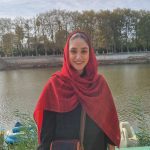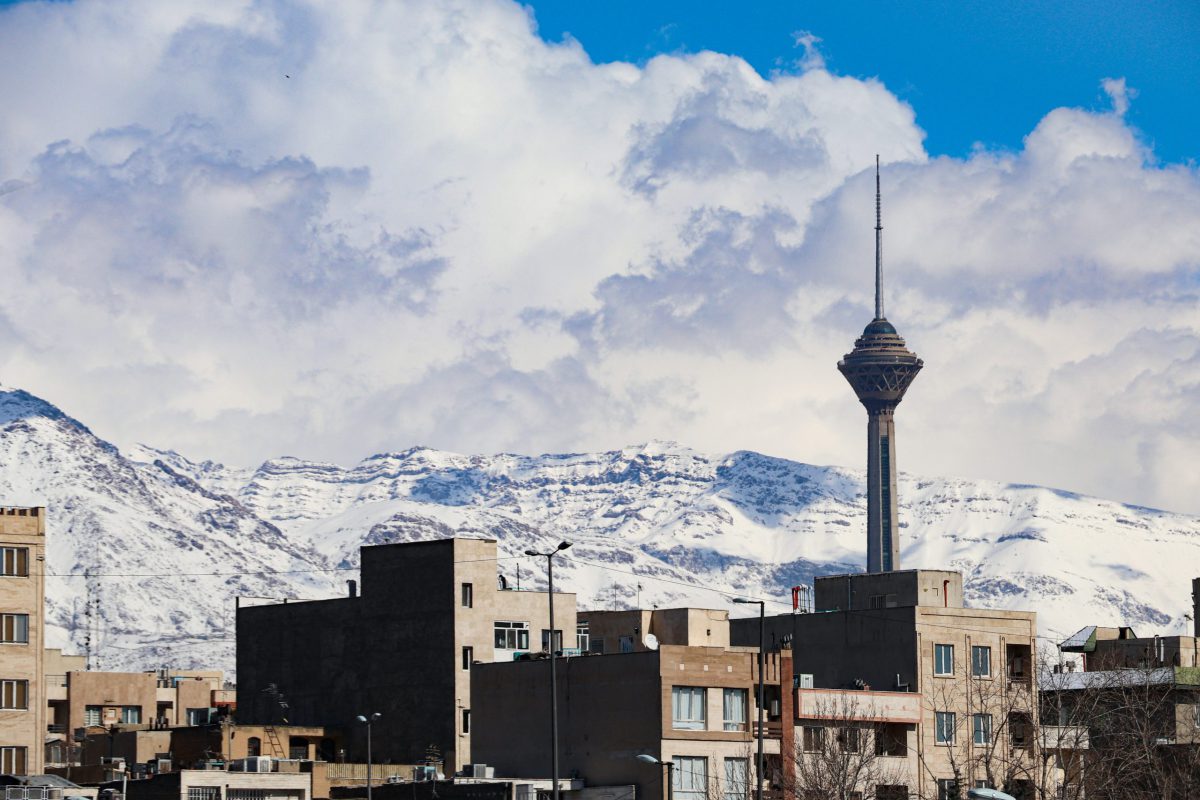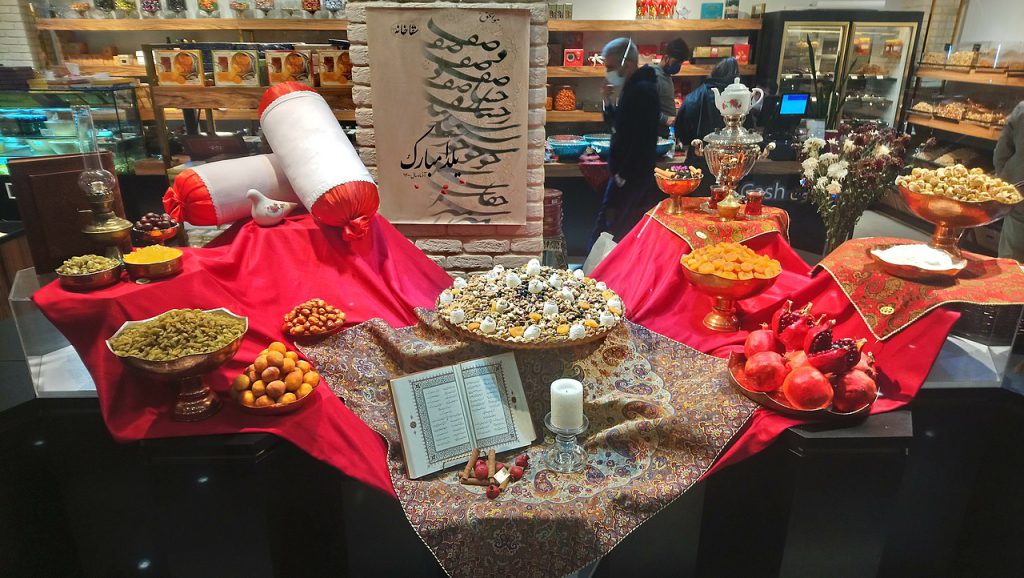Table of Contents
Winter is a challenging time when it comes to choosing the perfect travel destination. However, the cold weather shouldn’t hinder you from embarking on exciting journeys and creating unforgettable memories. Fortunately, there are countries with moderate climates during winter that offer the opportunity to experience all four seasons in one place. Among these destinations, Iran stands out as a remarkable country where nature and diverse landscapes harmonize to provide an exceptional experience.
Iran, a country of immense geographical diversity, offers a myriad of experiences. In the north, you can savor a warm cup of Iranian tea amidst the lush evergreen forests of Hyrcanian, while embracing the soothing sound of raindrops. Alternatively, you can stroll along the sandy shores of the Persian Gulf, feeling the warm grains beneath your feet. For the adventurous souls, the eastern parts of Iran offer mesmerizing desert landscapes and exhilarating winter sports in the western regions. It is the unique geographic features of Iran, with two central deserts encircled by mountain ranges, that create these varied weather patterns.
It’s important to note that different latitudes span across Iran, resulting in varying climates from north to south. The northern and southern coastlines boast distinct flora and forests. Thus, Iran offers the opportunity to experience all four seasons, especially during winter.
Winter in Iran: A General Guide
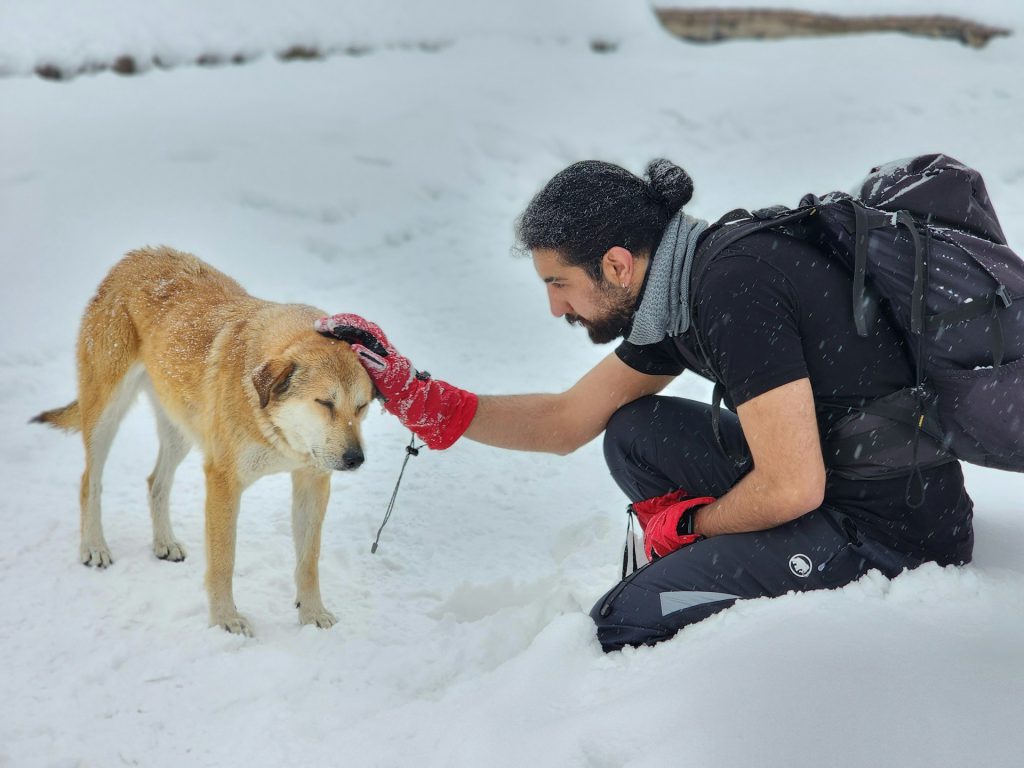
Winter in Iran isn’t just about snow everywhere. It’s a place full of surprises, where you can learn about a different way of life and see amazing sights. Think of cold air and mountains covered in white, but also beautiful old buildings with sunny open spaces and busy markets that don’t care about the cold. Winter in Iran gives you a mix of things to do and see that you can’t find in other places. It’s like two different worlds coming together in one country.
The best time to visit and take it all in? It’s during the colder months when everything changes. The land looks different, and you get to see Iran in a special way. The cold weather makes everything look new and exciting. You can see how people live their daily lives in winter, visit old places without too many other tourists around, and enjoy the beauty of nature covered in snow. It’s a time when Iran shows off its winter clothes, and you get to be there to see it all happen.
Iran Winter Temperature
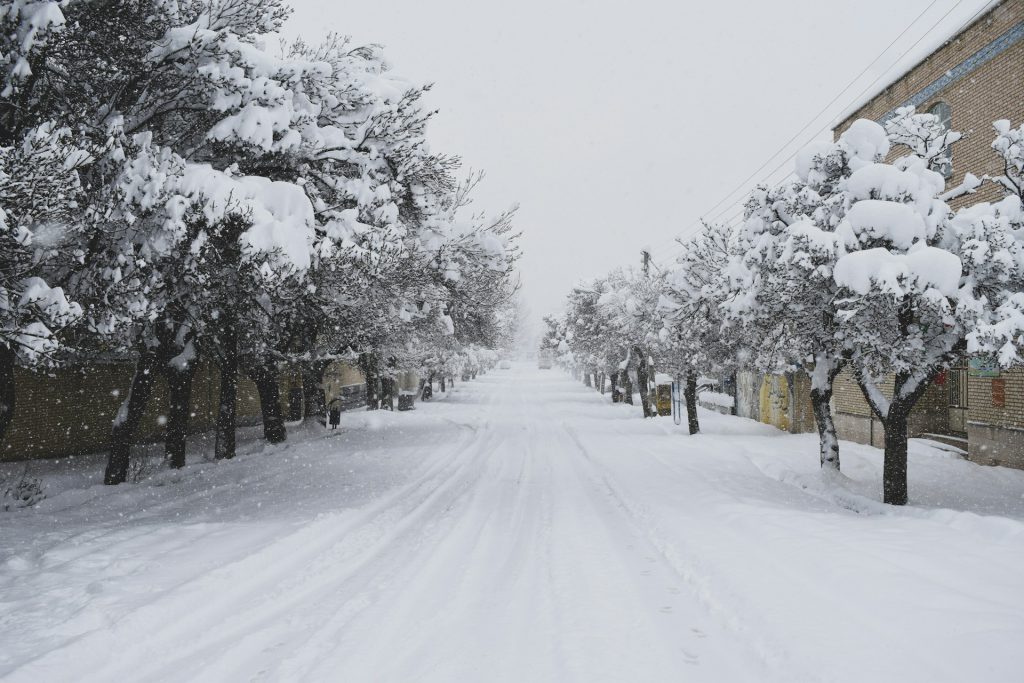
Iran’s big size means it has many different kinds of winter weather.
In the north and west parts, winter in Iran starts with wet snow, and it’s usually between 1 and 8 degrees Celsius (34-46 degrees Fahrenheit). This cold weather is great for people who like to ski. There are many ski places in the Alborz mountains near Tehran where lots of people go to have fun in the snow from December to March.
If you go to the south of Iran, the winter feels very different. The areas near the sea are much warmer, with temperatures during the day between 10 and 14 degrees Celsius (50-57 degrees Fahrenheit). This nice weather makes the south a good place to visit during winter in Iran. Many people like to go to islands in the Persian Gulf, like Kish and Qeshm, when it’s cold in other parts of Iran. But if you go to the mountains, it’s very, very cold. The temperature during the day can be below zero Celsius (32 degrees Fahrenheit).
January is the coldest month, especially in the northwest where it can get as cold as -5 to -8 degrees Celsius (23-18 degrees Fahrenheit). The middle of Iran and the areas near the sea are warmer, usually around 11 degrees Celsius (52 degrees Fahrenheit).
Top Ski Resorts in Iran
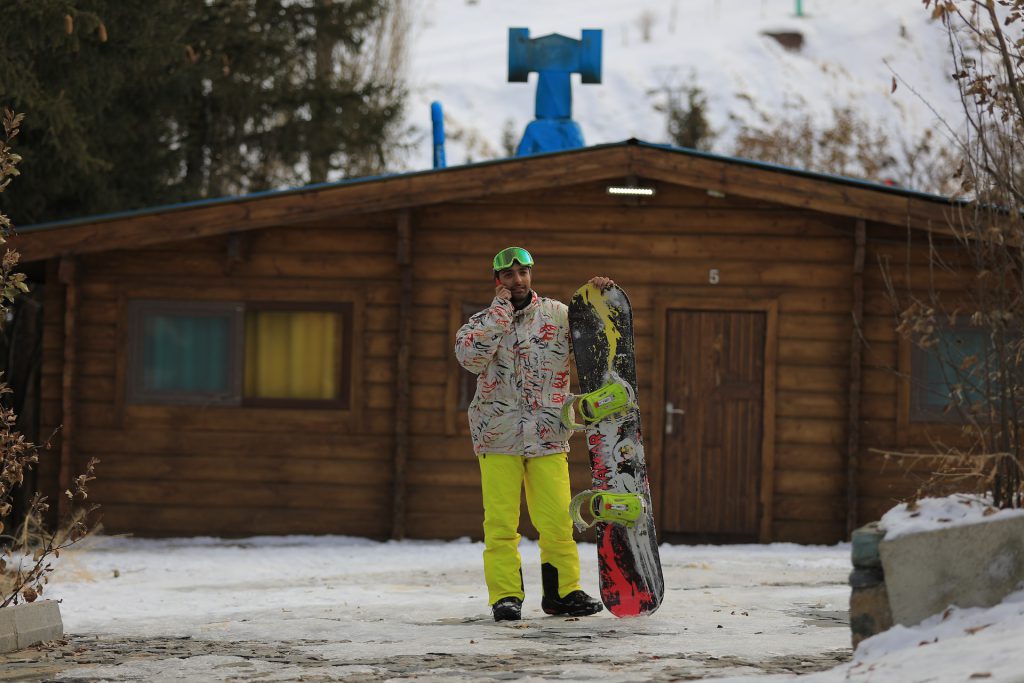
Iran ski resorts offer an enticing blend of quality and value, making them an attractive winter destination. From the challenging slopes of Dizin to the beginner-friendly runs of Shemshak, these mountain destinations cater to skiers of all skill levels.
But the appeal of skiing in Iran goes beyond just the slopes. The country provides remarkable affordability, with economical ski passes and budget-friendly accommodations. This allows you to enjoy a memorable winter vacation without emptying your wallet. The true highlight, however, might be the opportunity to immerse yourself in Iran’s rich cultural tapestry.
Dizin Ski Resort
Dizin Ski Resort, located 70km north of Tehran in the Alborz mountains, is the biggest and most famous ski resort in Iran. Open since the 1960s, Dizin is known worldwide and has a long ski season from December to May. Visitors can stay in hotels, cottages, or private apartments and enjoy activities like tennis, mountain biking, and climbing year-round.
The resort has four gondolas, three chairlifts, and nine surface lifts, giving access to slopes from 2,650m to 3,600m high. Dizin’s powder snow is as good as that in Europe or the Rocky Mountains. It’s easy to reach from Tehran, making it a great choice for all skill levels. Many tour operators can help plan your trip to ensure a fun and memorable skiing holiday. You can experience Tehran in winter here.
Tochal Ski Resort
Tochal Ski Resort is just 10km from Tehran’s northern suburbs, making it easy to reach for a quick ski trip. At an altitude of 3,963m, it is one of the highest ski resorts in the world, offering skiing from December to April, and sometimes June. Visitors take a long cable car ride up the mountain, enjoying great views of Tehran.
Once at the top, there are over 8km of ski runs with views of Mount Damavand, Iran’s tallest peak. Tochal’s slopes suit all skill levels, making it perfect for families and groups. With affordable prices and its close location to Tehran in winter, Tochal is a great option for a unique ski experience.
Shemshak Ski Resort
Shemshak Ski Resort is for experienced skiers looking for a challenge. Located northeast of Tehran in the city of Shemshak, this resort has steep, mogul-covered runs. It’s one of the largest ski areas in Iran, open since 1958. The slopes range from 2,550m to 3,050m high.
The ski season at Shemshak is from early December to late March, with both day and night skiing available. Though not as famous as other resorts, Shemshak’s tough terrain and beautiful mountain views make it a must-visit for advanced skiers.
Darbandsar Ski Resort
Darbandsar Ski Resort, 40 miles northwest of Tehran in the Elborz Mountains, is a cozy and quiet spot for skiing and snowboarding. It’s the second most challenging ski area in the region, with a modern gondola and exciting slopes.
Darbandsar stands out for its peaceful atmosphere, even during the busy season. Cozy cafes at the gondola’s base and peak add to the charm, making it a relaxing retreat. For those who love skiing in a calm and beautiful setting, Darbandsar is perfect.
Alvares Ski Resort
Alvares Ski Resort, situated in Ardabil province, is Iran’s second standard ski resort and sits at an altitude of 3,200 meters. Located in the village of Alvares, just 24 kilometers from Sarein, this resort transforms into a winter sports paradise during the colder months. With a ski lift operating through winter, Alvares offers thrilling slopes amidst its snowy peaks.
What makes Alvares unique is its long ski season, lasting six to eight months due to its high altitude and cold climate. This extended season attracts skiers for much of the year. Beyond winter sports, Alvares is a great spot for trekking adventures during the warmer months, inviting nature lovers to explore its beautiful landscapes. As Iran’s largest ski resort, Alvares is a top choice for ski enthusiasts looking for a long-lasting snowy adventure.
Deserts in Iran
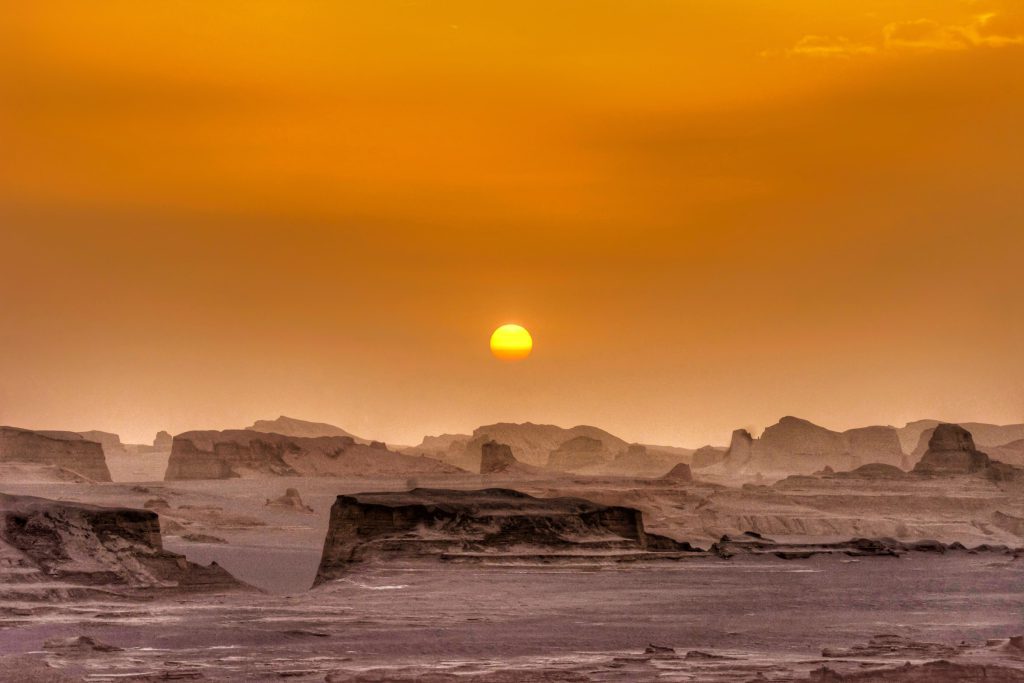
If you want to get away from the cold weather, deserts in Iran offer a very different experience compared to the country’s winter landscapes. Instead of snow, these large desert areas have sandy dunes and hot weather. This gives you the chance to see a different side of Iran and enjoy the warmth of the desert sunsets and the ancient history of these places.
Beyond just being visually striking, the deserts of Iran are also full of interesting cultural treasures. Visitors can explore old towns in the desert oases, where life has continued in much the same way for many generations. The dry desert environment has led to the development of unique architectural styles and traditional crafts. This allows you to see how the people who have lived in these deserts for a long time have learned to thrive in this land. From the beautiful patterns in handmade rugs to the flavorful spices in local food, every part of desert life shows a deep connection to the land.
Lut Desert
Kavir-e Lut, or Lut Desert, is a UNESCO World Heritage site in Iran. It spans about 51,800 square kilometers and is the hottest desert in Iran. The desert has areas shaped by the wind and salt flats. Located in Sistan and Baluchestan, Kerman, and South Khorasan, the best spots are near Kerman and Shahdad Village.
Visitors can stay in eco-lodges in Shahdad Village to enjoy the desert’s beauty. The sunlight in Kaluts is stunning and great for photos. Exploring the Lut Desert offers a unique adventure in Iran’s natural landscapes.
Dasht-e Kavir
Dasht-e Kavir, or Kavir-e Namak, is a huge salt desert in central Iran, covering 77,600 square kilometers. Surrounded by the Alborz Mountains, it has very hot summers and cold winters. Despite harsh conditions, it has a diverse ecosystem with wild sheep, camels, goats, Persian leopards, and gazelles.
Visitors can access Dasht-e Kavir from towns like Aran and Bidgol, Choopanan, Mesr Village, Khor and Biabanak, Naeein, Jandagh, and Garmeh Village. Must-see spots include Kavir National Park and Sefidab Caravanserai. Exploring Dasht-e Kavir is a must when visiting Iran.
Maranjab Desert
The Maranjab Desert, east of Qom, has a vast salt lake covering 1,800 km². Known for its unique triangle shape, it’s perfect for escaping city life. The salt lake is used for salt extraction, and guided tours are recommended due to swampy areas.
Attractions include Maranjab Castle, a Caravanserai, a Qanat, sand dunes, and Aran and Bidgol Salt Lake. A visit to the Maranjab Desert promises an unforgettable adventure.
Rig-e Jenn Desert
Rig-e Jenn Desert, with its sand dunes and rugged terrain, is great for hiking, trekking, and off-road driving. It has unique animals like desert foxes, gazelles, and birds. There are also historical sites like ruins of a caravanserai, a Sassanid-era castle, and a 6th-century settlement.
Despite its remote location, Rig-e Jenn attracts visitors worldwide. The best time to visit is from October to April when the weather is cooler.
Mesr Desert
Mesr Desert in Isfahan province is a beautiful desert village attracting many tourists. Despite extreme heat, it has gardens and date palm trees. Popular activities include camel riding, safaris, and trekking in sand dunes. The night sky is a highlight.
Accommodation is available in nearby villages like Mesr and Farahzad, allowing visitors to explore attractions like Khur Salt Lake and date gardens. For a unique desert experience, the Mesr Desert is a must-visit.
Iran Islands
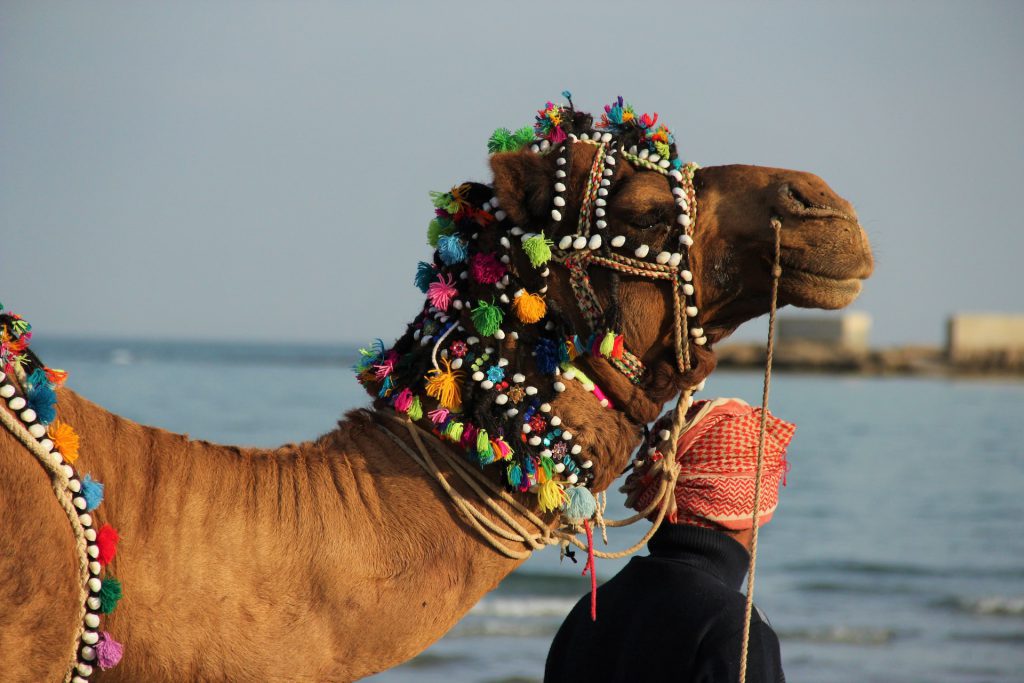
Iran islands offer a true escape from the winter weather if you’re interested. Islands like Kish and Qeshm, located along the Persian Gulf and the Strait of Hormuz, provide a slice of paradise, with sunny beaches, blue waters, and lots of outdoor activities.
If you want to get away from the cold and enjoy the warmth, Iran’s island retreats are the perfect destination. Imagine spending your days basking in the sun, exploring the marine life by going snorkeling or diving, or just relaxing on the beautiful beaches. These tropical islands allow you to leave the stress of the mainland behind and enjoy a peaceful, carefree vacation. Whether you’re looking for an adventure-filled getaway or a relaxing break, Iran’s hidden island gems are sure to captivate and rejuvenate you.
Kish Island
Escape to Kish Island, one of Iran’s beloved winter destinations, where a perfect blend of history, culture, and leisure awaits. Indulge in activities like swimming, diving, and dolphin-watching, surrounded by the island’s pristine beaches and crystal-clear waters. Take advantage of the designated tax-free zone and enjoy a shopping spree, where you can find a wide array of products from around the world.
Qeshm Island
Explore Qeshm Island, a treasure trove of natural wonders. Discover the awe-inspiring Chahkooh Canyon, where towering rock formations create a surreal environment. Wander through the enchanting Status Valley, marveling at its unique geological features. And don’t miss the picturesque Naz Islands, with their stunning rock formations and mesmerizing jellyfish. Qeshm Island offers a captivating blend of nature and culture, leaving visitors with unforgettable memories.
Eastern Iran beckons with its diverse landscapes, historical sites, and natural wonders, offering an adventurer’s paradise. Embark on thrilling journeys, indulge in cultural discoveries, and immerse yourself in the untamed beauty of this remarkable region.
Other Attractions During Winter in Iran
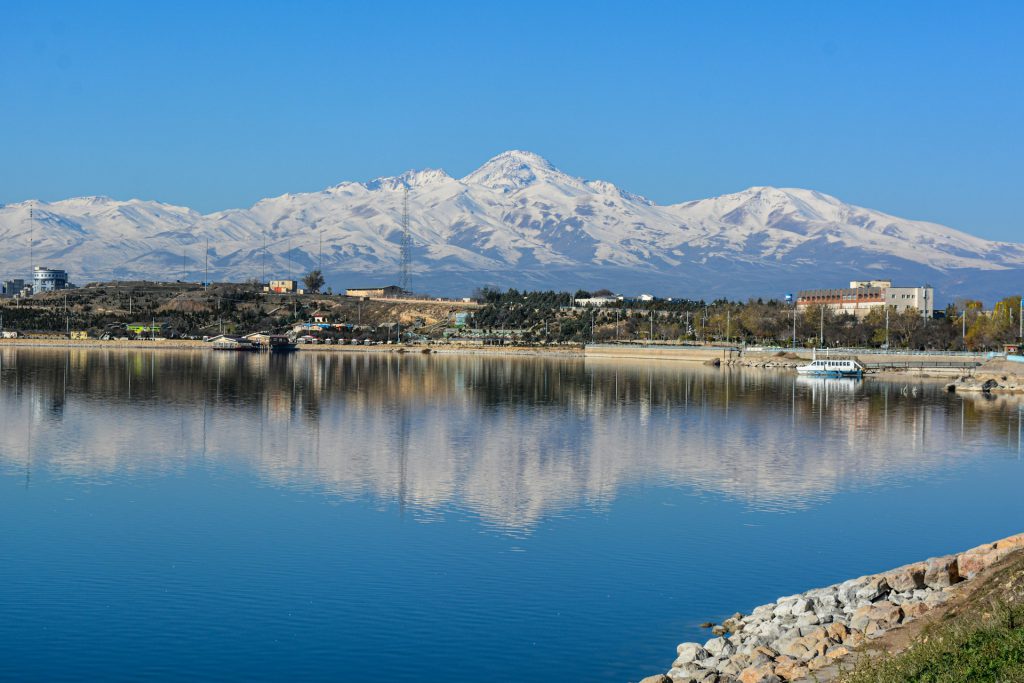
To help you make the most of your travel during the winter in Iran, we have compiled a list of activities and destinations that cater to diverse interests, ranging from cultural explorations to thrilling adventures.
Therapeutic Hot Springs in Ardabil
If your idea of a perfect winter getaway involves peace and tranquility, Ardabil’s hot springs are a must-visit destination. Known for their rejuvenating and therapeutic properties, these natural springs provide a serene oasis amidst the chilly winter months. Indulge in the warm waters, allowing the soothing heat to melt away your stress and revitalize your body and mind. Embrace the restorative power of nature as you soak in the tranquil ambiance of Ardabil’s hot springs.
Birdwatching Extravaganza at Miankaleh
Calling all birdwatching enthusiasts! Miankaleh, with its wetlands, dams, and peninsulas, is a haven for bird species during the winter months. Grab your binoculars and explore this remarkable destination, where you can observe a diverse array of migratory birds.
From graceful waterfowls to majestic raptors, Miankaleh offers a captivating birdwatching experience that will leave you in awe of nature’s wonders.
Frozen Majesty at Parishan Waterfall, Kermanshah
Iran, a country of immense natural beauty and geographical diversity, is home to a myriad of breathtaking waterfalls. From north to south, east to west, cascading waterfalls adorn the landscape, creating enchanting scenes of splendor and tranquility. Exploring these magnificent waterfalls is a must for nature enthusiasts and adventurers seeking unforgettable experiences during the winter season.
During winter, when the weather is cool and the landscapes are adorned with a snowy blanket, visiting a waterfall in Iran is a unique and captivating activity. The frozen beauty of the waterfalls creates a mesmerizing spectacle that truly showcases the magic of winter in Iran.
One of the remarkable waterfalls to visit during winter in Iran is the Parishan Waterfall in Kermanshah. As temperatures drop, the cascading water transforms into a frozen masterpiece, forming icy cliffs that dazzle the eyes of visitors. Scaling these icy cliffs and witnessing the frozen majesty of Parishan Waterfall is an exhilarating adventure that combines the thrill of mountaineering with the awe-inspiring beauty of nature.
Zarivar Lake and Karaftoo Cave in Kordestan
Prepare to be mesmerized by the frozen splendor of Zarivar Lake in Kordestan. Take in the tranquil beauty of this icy expanse and let the serenity of the surroundings envelop you. For those seeking even more adventure, explore the man-made wonder of Karaftoo Cave nearby. Delve into the depths of this natural marvel, where ice formations create a mystical atmosphere that will leave you in awe of nature’s artistry.
Kalat: Iran’s Hot-Water Waterfall in Khorasan Razavi
Are you an adventure enthusiast seeking a unique and thrilling experience? Make your way to Khorasan Razavi and marvel at the wonder of Kalat, Iran’s only hot-water waterfall. Witness the cascading hot springs as they create a breathtaking spectacle amidst the natural surroundings. Indulge in the rejuvenating and therapeutic properties of the hot water, creating an unforgettable adventure that combines adrenaline and relaxation.
Ferdows: Eastern Desert Charms in Southern Khorasan
Explore the captivating eastern deserts of Ferdows in Southern Khorasan, a paradise for adventurers seeking breathtaking landscapes and mouthwatering pomegranates. Embark on a desert expedition, immersing yourself in the raw beauty of the arid dunes. Let the vastness of the desert captivate your senses as you traverse its terrain, and savor the delicious sweetness of locally grown pomegranates, a true delight for your taste buds.
Sahan Mountain, Tabriz Winter
Standing tall at 3707 meters (12,162 feet), Sahand Mountain is the highest peak in East Azarbaijan Province and a notable dormant volcano. Revered as “the bride of Iran’s mountains,” Sahand boasts a lush, verdant landscape that enchants visitors with its dense vegetation, expansive meadows, and grasslands. The mountainside is a botanical paradise, adorned with vibrant corn roses and buttercups, and dotted with rare species of Fritillaria, creating a picturesque vista for tourists and nature enthusiasts alike.
During winter in Iran, Sahand Mountain is also home to a popular ski resort, drawing adventure seekers and winter sports enthusiasts to its snowy slopes. The combination of its natural beauty and recreational opportunities makes Sahand a year-round destination, offering something for everyone from botanists and hikers to skiers and snowboarders.
Iranian Winter Festivals
Iran boasts a history spanning thousands of years, with ancient customs and ceremonies deeply rooted in its culture. Winter in Iran is the season of vibrant festivals, and two noteworthy celebrations are:
Yalda Night or Shab-e Chelleh
This ancient tradition, Yalda Night, is observed on the 21st of December, the longest night of the year. Iranians gather with their families around the “Korsi,” a low table with a heater underneath, covered with blankets. They relish watermelon, pomegranate, red beet, and nuts while listening to music, reciting the poetry of Hafez, and staying awake until dawn. Joining Iranians in this night of light and celebration promises an unforgettable experience.
Sadeh
Celebrated on the 30th of January, Sadeh is a festival symbolizing the triumph over darkness and cold. It serves as a unifying force, bringing people together. Festivities include bonfires, traditional dishes like “Ash” (a hearty soup), music, storytelling, and recitations of poems from the epic Shahnameh. Cities such as Tehran, Shiraz, Isfahan, Ahvaz, Meybod, Yazd, Ardakan, and Kerman host special events to commemorate Sadeh.
Packing for Winter in Iran
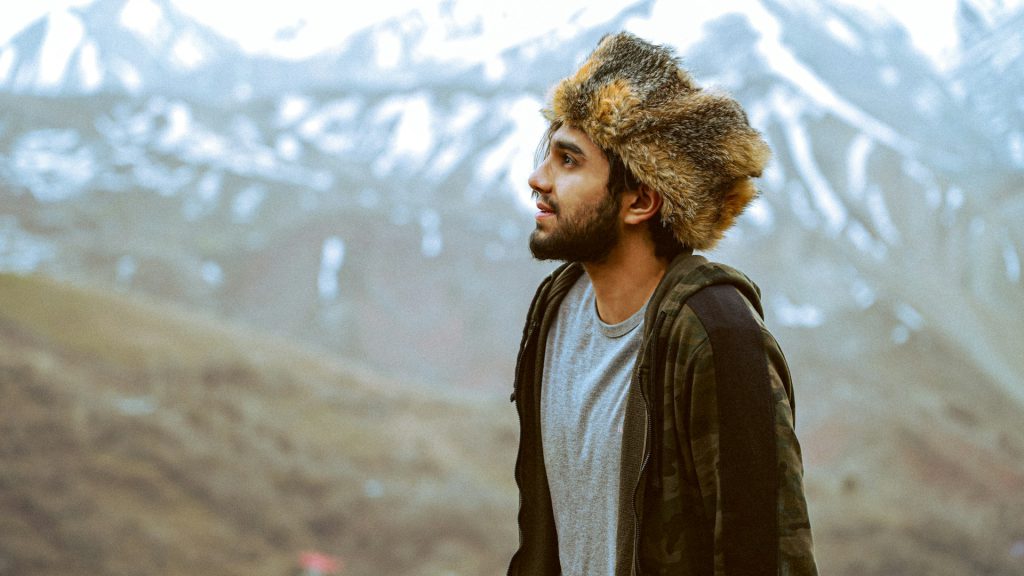
In Iran, women need to dress conservatively according to local customs and government rules. This is easy during winter in Iran since you will be covering up to stay warm. From December to March, the central parts of Iran are cold, while the southern parts are mild but still chilly at night. The northwest can be very cold. To stay comfortable, wear long sleeves and pants with thermals underneath. Most places in Iran have modern heaters, so you will stay warm inside.
Essential Winter Packing Tips
For a stylish and warm winter vacation in Iran, packing the right items is very important. Start with thermals as your base layer, then add a top, pants, a jersey, and a good coat. Lightweight fleece jackets or three-in-one types are perfect. Choose waterproof, comfortable shoes or boots to keep your feet dry and warm. Don’t forget to bring scarves, thick socks, beanies, gloves, and earmuffs. Even during winter in Iran, you will need a hat and sunglasses for sunny days.
By following these tips, you will be well-prepared to enjoy the warmth and hospitality of Iran and its people.
FAQs about Winter in Iran
Q1: What months are winter in Iran?
A1: From November to February, you can admire the snow in Tehran and indulge in winter sports at ski resorts like Dizin. The rest of Iran also experiences cool temperatures and significant rainfall during winter. It’s advisable to pack warm clothing and a raincoat to stay comfortable during your travels.
Q2: How cold does it get in Iran?
A2: Iran’s climate is shaped by its position between the arid subtropical conditions of the Arabian desert regions and the humid subtropical climate of the eastern Mediterranean area. January stands as the coldest month, with temperatures ranging from 5°C to 10°C, while August marks the hottest month, reaching temperatures of 20°C to 30°C or higher.
Q3: Does it snow in Iran?
A3: Iran experiences a varied climate. In the northwest, winters bring cold weather with heavy snow and temperatures below freezing. Spring and fall are generally mild, while summers are dry and hot.
Q4: Is Iran colder than Turkey?
A4: Iran tends to be colder than its neighboring countries like Turkey and Armenia, primarily because of its higher elevation.
Q5: What are the 4 seasons in Iran?
A5: Spring, summer, autumn, and winter are the four seasons in Iran, just like in many other countries.
Last Words: Experience the Best of Iran in Winter with a Customized Tour
Winter in Iran is not just about snow everywhere. It is a place with many surprises. You can learn about a different way of life and see amazing things. Think about the cold air and mountains covered in white. But there are also beautiful old buildings with sunny open spaces and busy markets that don’t care about the cold weather.
When you want to enjoy the best of winter in Iran, customized tours are your ticket to experiencing the country’s stunning landscapes and rich culture. At To Iran Tour, we specialize in creating personalized travel experiences that cater to your specific interests. Whether you’re captivated by snowy scenery, fascinated by Iranian traditions, or eager to explore historical sites, our Iran Tours are designed to provide you with an unforgettable adventure.
Experience the magic of winter in Iran with us and embark on a journey filled with discovery and wonder.
